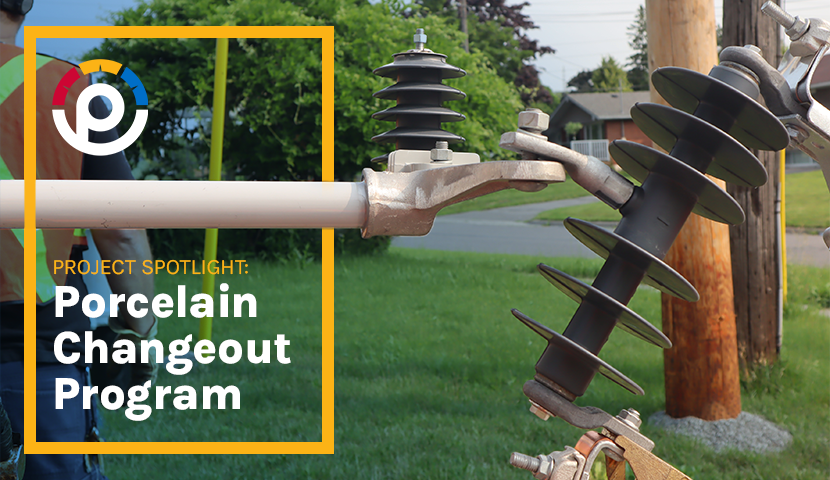As part of our mission to maintain a local electricity grid that will reliably support Oshawa’s future, Oshawa Power aims to nearly eliminate the risk of pole fires by 2026 with our Porcelain Changeout Program.
The local utility’s program, which kicked off in 2021, will see crews replace thousands of porcelain switches and insulators across the City of Oshawa with new, modern polymer-based alternatives.
While traditional porcelain materials have been used across the industry for decades due to their insulating properties, they carry an increased risk of pole fires caused by ‘tracking’. This phenomenon occurs when condensation containing airborne debris causes build up on electrical equipment. Generally caused by road salt or other road debris kicked up by motor vehicles, the build up occurring on porcelain equipment allows high voltage electricity to ‘track’ across metal brackets and to the wooden poles causing high impact pole fires.
The resulting fires may cause faults in the local grid, leaving customers in the area without power. Outages caused by pole fires are often longer lasting than other outage types as crews must first extinguish intense electrical fires before performing a pole replacement among other repairs.
“As we look to build Oshawa’s grid of the future, we are extending our focus beyond automation and digital technologies. In our industry reliability is king and sometimes the simplest solutions, such as using higher quality, more resilient materials, can mitigate risks and improve reliability for years to come,” said Mike Weatherbee, Oshawa Power’s Managing Director. “Our strategy of ‘strategic engineering’ is about putting the right technologies in place to ensure Oshawa has one of the strongest local grids in the province.”
To complete this program, Oshawa Power is including porcelain changeouts as a part of all projects under our Capital Rebuild program. So far, through the Porcelain Changeout Program, we have replaced approximately 60% of our existing porcelain infrastructure with polymer-based alternatives. The program is expected to reach completion by 2026.














